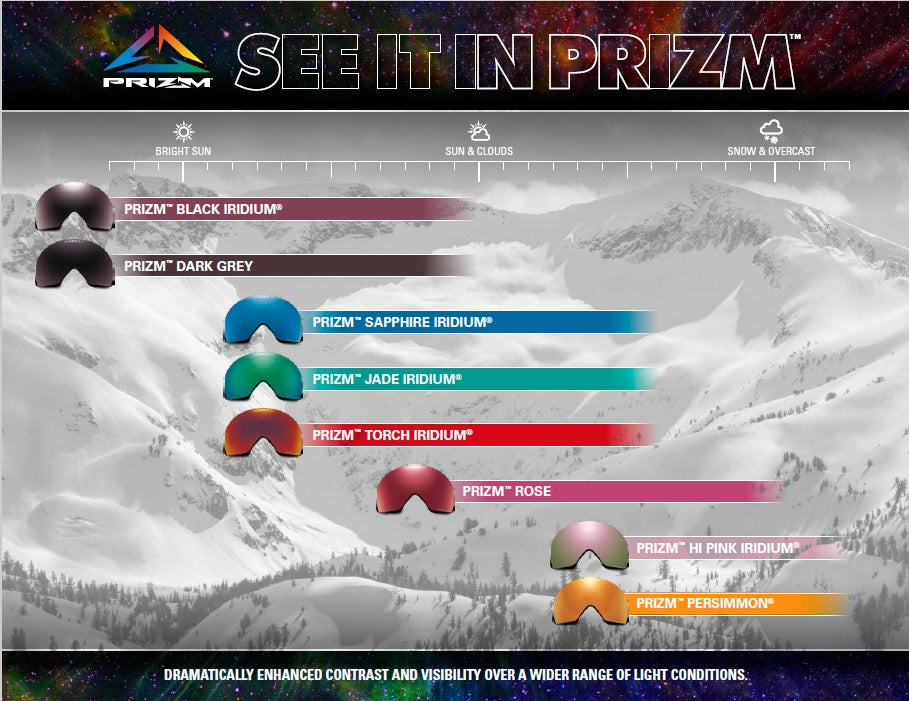
PRIZM™ - TECHNOLOGIES IN OAKLEY GOGGLES
Oakley PRIZM™ technology is an absolute revolution in the world of winter sports!
The phenomenon of PRIZM™ technology lenses is that they increase the contrast of vision in very bright light conditions, making any irregularities, bumps or icy patches on the snow no longer invisible.
Goggle lenses equipped with Oakley PRIZM™ technology perform well in a much wider range of weather conditions, so sudden weather changes in high mountains do not require carrying a second lens.
Advantages:
- Increased contrast adapted to snow - moguls and topography are more visible
- Increased visual comfort - no squinting in bright sunlight
- Very wide range of weather conditions
Prizm™ significantly enhances contrast and visibility and, above all, performs well in a wider range of lighting conditions. For 2015, Oakley expands the Prizm™ collection with new colorways: Prizm™ Sapphire Iridium® and Prizm™ Torch Iridium®.
Here are 5 lens colors featuring Oakley PRIZM™ technology. Find the best solution for you:
Strong sunshine, clear sky to light cloud cover:
- Prizm™ Black Iridium®
Moderate cloudiness and changeable weather conditions:
- Prizm™ Sapphire Iridium® NEW
- Prizm™ Jade Iridium®
- Prizm™ Torch Iridium® NEW
Snow and heavy cloud cover:
- Prizm™ Rose
- Prizm™ Hi Pink


Driving all day can tire your eyes. Snow reflects almost 90% of solar radiation, so your eyes are exposed to almost twice the amount. In addition to the highest levels of filtering (which are standard at Oakley), Prizm technology prevents squinting, preventing migraines and general eye strain.
Below is a comparison of the image seen on the slope without goggles and with Oakley Prizm goggles:

WHAT IS VLT?
VLT (Visible Light Transmission) measures the percentage of sunlight that a lens allows through.
On sunny days, you need low VLT lenses to protect against vision loss and reduce eye strain. Low VLT lenses typically have a darker tint to reflect more light and often feature a mirror coating to enhance the visibility of contours and bumps on the slopes when moving quickly.
On snowy and foggy days, when light conditions are not favorable, lenses with a higher VLT index perform better.
WHAT ARE S3/S2/S1 LENS CATEGORIES?
S3 - Sunny weather
In addition to blocking 100% of harmful UV rays, the strong tint offers maximum protection against glare, so you can see everything comfortably in favorable weather conditions.
S2 - Clouds
The most frequently purchased type of lens, capable of handling a variety of lighting conditions, provides perfect visibility on both sunny and cloudy days, and is also ideal when afternoon shadows begin to appear on the slopes.
S1 - Snow and fog
It provides crystal-clear vision when visibility on the slopes is poor. Opt for lenses with a higher VLT for heavy snowfall or when you plan to ski after sunset.


